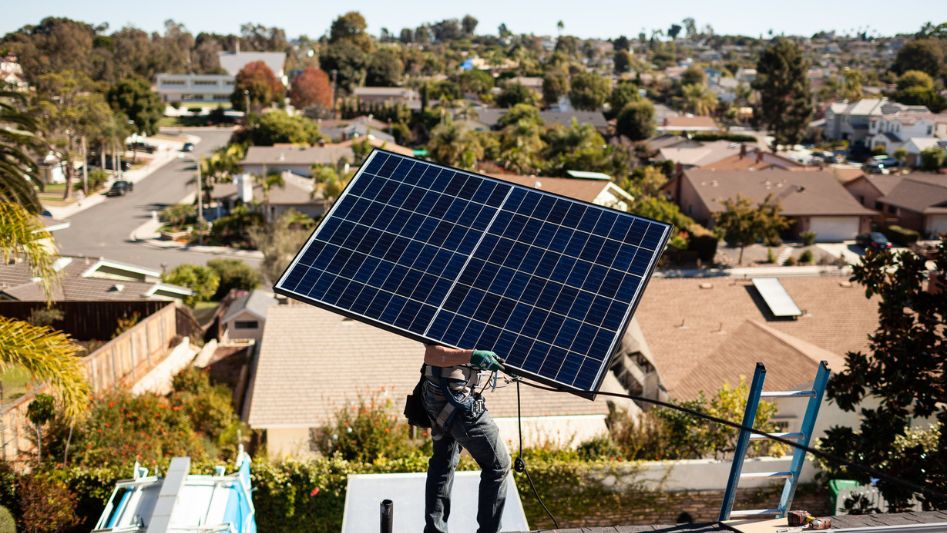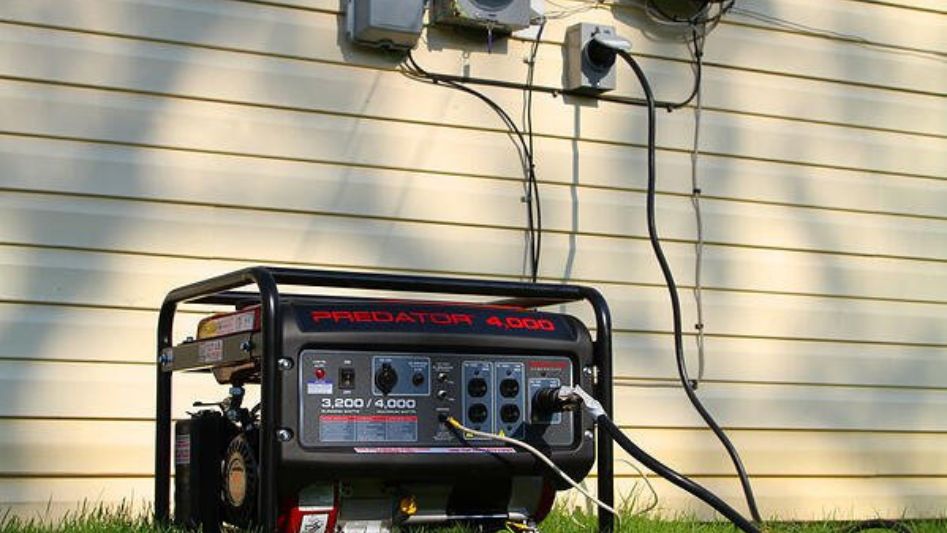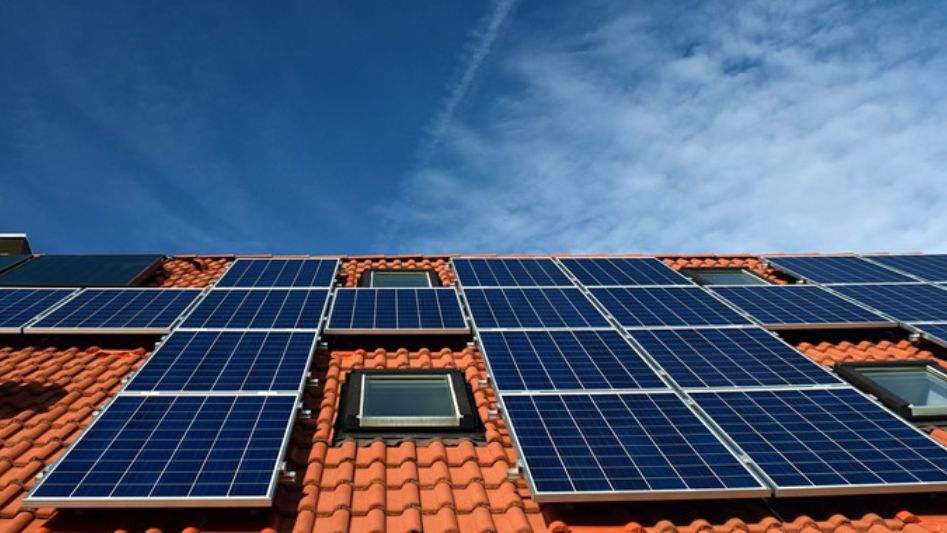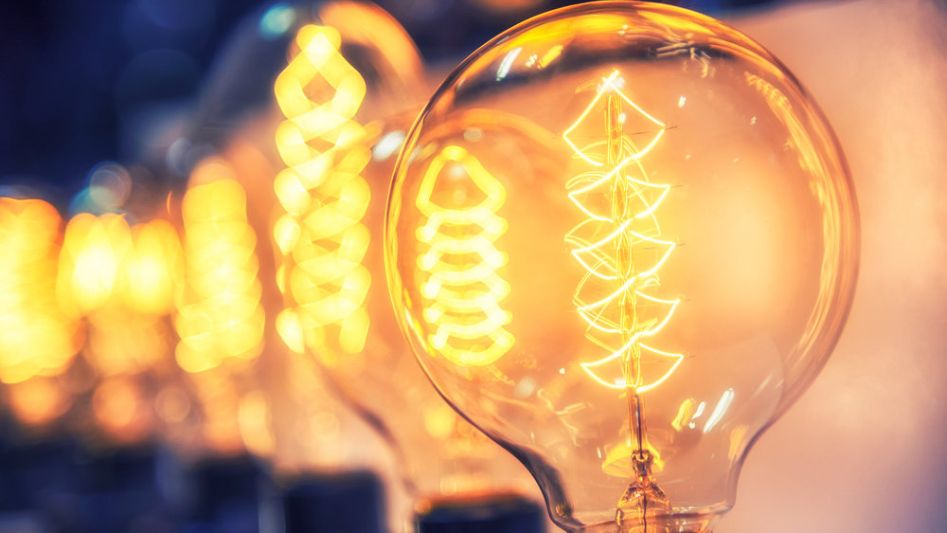People are increasingly looking for methods to cut their energy expenses and become more ecologically friendly, which has increased the popularity of small wind turbines.
But how can you determine whether or not a little wind turbine will be sufficient to power your house?
This post will provide the tools you need to determine the amount of electricity your house requires. In addition, we will provide an example computation as well as a method for determining whether or not it is worthwhile to build a wind turbine.

Can a Small Wind Turbine Power Your Home? (How To Calculate)
A average residence in the United States requires around 900 kWh of electricity each month, which may be powered by a modest wind turbine with a capacity of 5 kW. This number is based on the assumption that the site circumstances are favorable, the rotor has an adequate diameter, and the average wind speed is at least 19 kilometers per hour (12 miles per hour).
How To Calculate the Amount of Power Your House Needs
You need to tally up the wattage of every appliance and gadget you use in your house so you can determine the overall amount of electricity your home requires to function. You may find a label with this information on the bottom or rear of many different gadgets. If you still can’t locate it, you may seek it up in the owner’s handbook or search for it online.
As an example, suppose you have the following home equipment and tools at your disposal:
- Coffeemaker: 1,000 watts
- Microwave oven: 1,200 watts
- Fridge: 1,200 watts
- Dishwasher: 1,800 watts
- Washing machine: 750 watts
- Clothes dryer: 1,500 watts
- Laptop: 60 watts
- TV: 100 watts
- Other devices: 1000 watts
In this scenario, the total amount of power that you need is equal to 8,610 watts/hour, which is calculated as follows: 1,000 watts + 1,200 watts + 1,200 watts + 1,800 watts + 750 watts + 1,500 watts + 60 watts + 100 watts + 1000
Multiply this by the number of hours that you require the appliances to be operational. Let’s make this example as basic as possible by using 8,610 watts for our example.
You can now determine the power that your little wind turbine ought to create now that you are aware of the overall wattage you want.
In order to do this, you will need to be familiar with the following information:
- The typical rate of wind blowing in your region
- The diameter of the rotor that your turbine has
- The effectiveness of your turbine in its operation
On the website of the National Renewable Energy Laboratory (NREL), you will be able to determine the typical wind speed that blows in your region.
The distance that extends from one edge of the blades to the other defines the rotor’s diameter. The amount of wind energy that is successfully converted into usable power is referred to as a turbine’s efficiency. This information is included in the product specifications for your turbine, where it may be found.
For illustration purposes, let’s pretend the typical wind speed at your location is 12 meters per second, and your turbine has the following specifications:
- Reduced speed: 9 meters per second
- Air density: 1.225kg/m3
- Rotor diameter: 15 feet
Now that you have all of this information, you can determine the amount of power that your turbine produces by plugging it into the formula.
P = [air density] [area swept] [wind velocity cubed] 0.5
The density of the air is 1.225 kg/m3 on average. The swept area may be calculated by multiplying 3.14 times the rotor diameter squared. The speed of the wind is expressed in terms of meters per second.
In the form of an equation, that would look like this:
P = 1.225 • (3.14 • 7.5^2) • 12 • 0.5
P = 1,298 watts
In light of this illustration, the little wind turbine you have should be capable of producing at least 1,298 watts of electricity each hour. This activity calls for a turbine with a minimum efficiency of 30% and a capacity of 5 kWh.
Things To Keep in Mind When Shopping for a Wind Turbine

It is essential to keep in mind that the efficiency of wind turbines is not one hundred percent. Due to this limitation, a turbine with a capacity of one kWh will never produce one thousand watts. 20–35 percent is the typical range of a small wind turbine’s efficiency. Therefore, a turbine with a capacity of 1 kWh will, on average, produce between 200 and 350 watts of electricity.
Homeowners often select small wind turbines with a capacity of 5 kW, even if their power requirements are just 1 kW. This provides them with a buffer so that they can produce sufficient amounts of power even when the wind isn’t blowing as strongly as it often does. It is also essential to keep in mind that the amount of power produced is reliant on the average wind speed. When the wind is strong and gusty, a turbine will produce more energy than when the wind is calm and gentle.
The amount of electricity that a turbine generates is negatively impacted as the wind speed rises. This is due to the fact that the blades were created to rotate at a certain speed in order to produce electricity. When the wind speed is greater than this, the turbine’s blades engage a braking mechanism, which results in a reduction in the amount of electricity it generates.
It is essential to your endeavor’s success to choose a tiny wind turbine with a high wind speed rating. When the winds are strong, a turbine that is more powerful and has a higher wind speed rating will be able to produce more electricity.
Another important consideration is the way in which the wind is blowing. When the wind blows straight onto the blades of a turbine, the amount of power that the turbine produces will increase. If, on the other hand, the wind blows in an oblique direction, the turbine will not spin as efficiently.
Horizontal vs. Vertical Axis: Which One Should You Get?
The horizontal axis wind turbine and the vertical axis wind turbine are the two basic varieties of tiny wind turbines.
Because of its higher level of productivity, horizontal-axis turbines are now the most popular choice among consumers. You will incur more costs to take advantage of this higher level of efficiency, but in most cases, those costs will be well justified. Since they produce less noise, turbines with a vertical shaft are a great choice for use in residential areas.
There are advantages and disadvantages to using each different kind of turbine.
Turbines can generate more power with a horizontal axis.
They are also less difficult to maintain since each component may be reached without difficulty. However, in addition to this, they are also more costly and produce more noise.
Turbines with a vertical axis create less power and are less efficient than those with horizontal axes. They are also more difficult to maintain due to the fact that their components are not as readily available. On the other hand, they produce far less noise and cost significantly less.
Because of this, vertical-axis tiny wind turbines are an excellent choice for residential applications in which noise levels are a primary consideration. The fact that they are available at a lower cost is something that appeals to a lot of customers.
Other Components You Need To Run a Wind Turbine
You won’t only need the wind turbine itself; in addition, you’ll need a tower, batteries, and a charge controller.
- The tower: In order to capture the wind without any obstructions, you will need to erect the turbine to a sufficient height. The wind turbine will produce a greater amount of electricity the further up you go. Towers of up to 100 feet in height are recommended by turbine manufacturers (30 meters). The problem with constructing such tall buildings is that it may be quite costly and requires a significant amount of concrete for the base of the structure.
- Batteries: In order to store the electricity generated by the turbine, you’ll need these. The vast majority of authorities agree that lithium-ion batteries are the best option because of how efficient they are. These power packs may be pricey, but they will outperform lead-acid batteries in durability and performance during their lifespan.
- The charge controller: is the component that is responsible for regulating the flow of electricity from the turbine to the batteries before it is sent to the batteries. It eliminates the risk of the juice pack being overcharged, which is the most common cause of damage to batteries. Additionally, the charge controller will stop an excessive amount of battery discharge, which is something that is harmful to your batteries.
- Inverter: This component changes the direct current (DC) power that comes from the batteries into alternating current (AC) electricity, the sort of current used in your house. The inverter has to be three thousand watts for the majority of households.
Wind Turbine Maintenance Costs

Your little wind turbine, much like the majority of machinery, will need to be maintained and repaired so that it can continue to function effectively. The following are the most significant red flags to keep an eye out for:
- The generator requires regular maintenance in order to function properly. The blades represent the majority of the expenses associated with the maintenance of your generator. Due to the wind and weather effects, you will need to replace them at regular intervals of a few years. Blade replacement may cost anything from $500-$2000 per blade.
- Upkeep of the tower. at regular intervals, towers should be examined and maintained by undergoing necessary repairs. This is due to the fact that they are constantly exposed to the weather. The cost of annual inspection and maintenance of a tower may range anywhere from $1,000 to $5,000.
- The care and feeding of the batteries. Batteries must also be changed at regular intervals, often every few years. The price of these components ranges anywhere from $500 to $3000.
Small Wind Turbine Return on Investment
A smaller wind turbine’s return on investment (ROI) is typically around 10%. If you put $1,000 into a generator, you should anticipate making $100 per year from it. Although the return on investment is not exceptional, it is better than what you would get from the vast majority of savings accounts.
One of the primary reasons the return on investment (ROI) for turbines is not as large as one may expect is the hefty initial investment. Because the turbine itself may cost anywhere from $5,000 to $20,000, it may take a considerable amount of time before you see a return on your initial investment.
The maintenance cost is another factor contributing to the low ROI generated by wind turbines. As we have seen so far, the moving parts, including the blades, batteries, and other components, must be serviced and replaced regularly. When added up over time, these expenses might significantly reduce your earnings.
One of our cousins has a personal wind generator of his own. He has held it for three years and maintains that purchasing it was a wise financial decision. He has not yet been need to change the batteries, but he has been required to do it twice with the blades. He claims that the electricity produced by his turbine is sufficient to operate his whole home and still have enough left over. The only thing that bothers him is the loudness.
The Bottom Line
You should now be able to determine the size of the wind turbine that is required to power your house. The most important thing to keep in mind is that there must be sufficient room for both the wind turbine and the tower. You also need to consider the potential return on investment as well as the expenses of upkeep (ROI).
If you are thinking about purchasing a tiny wind turbine, then you should go ahead and do it. Just remember to finish your assignment before moving on.

